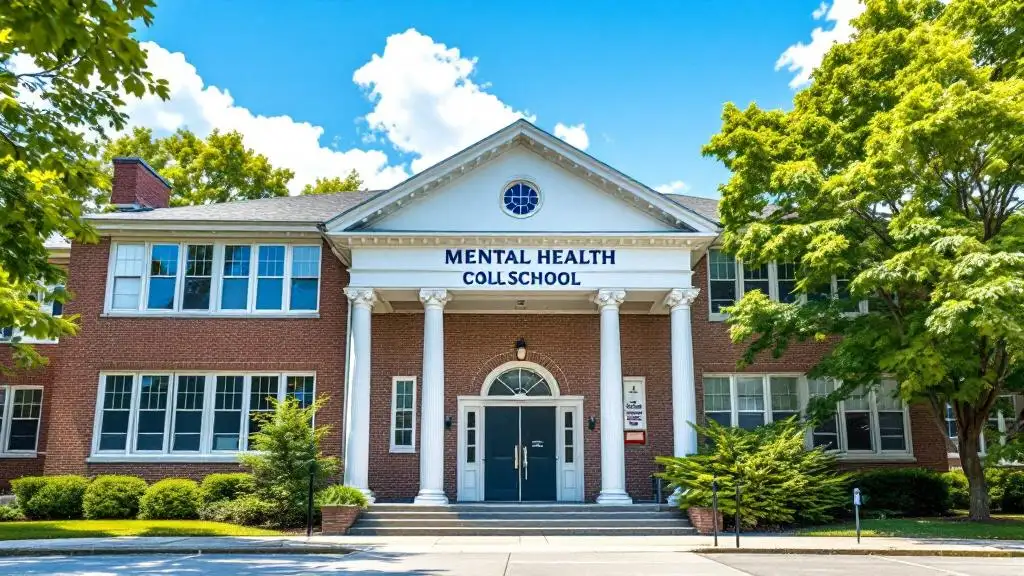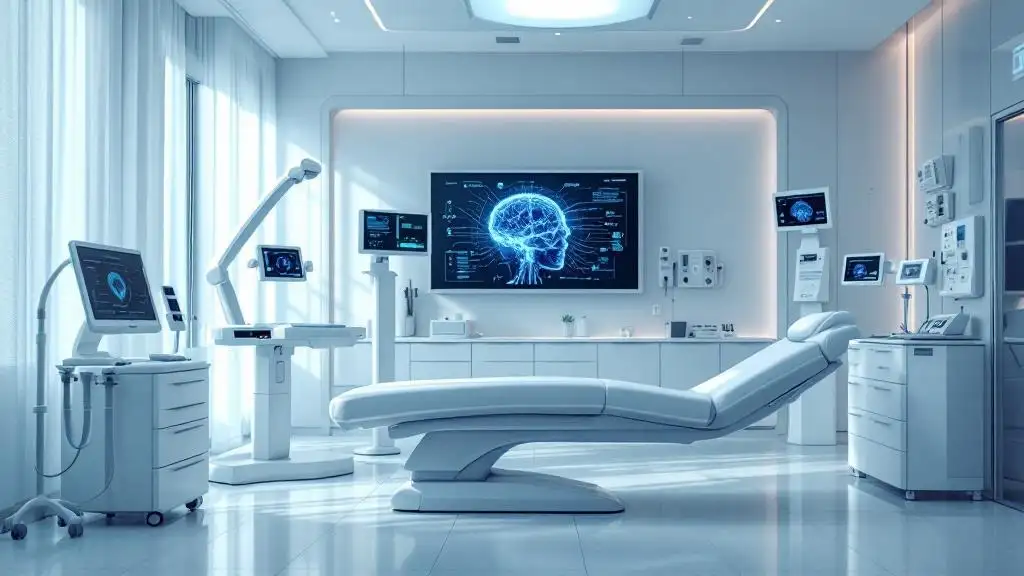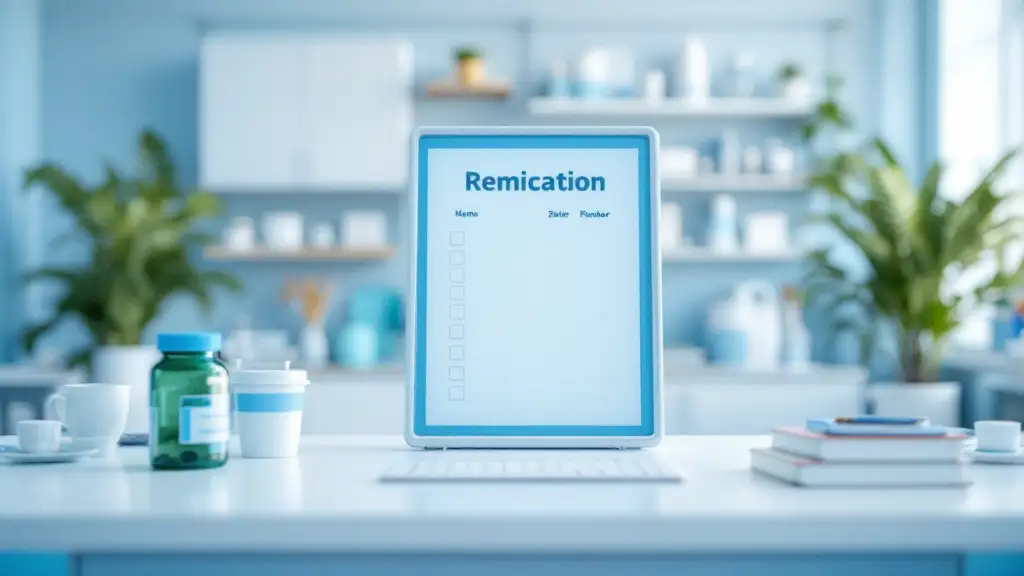Understanding the Intersection of Learning Hurdles and Mental Health
Young people with learning hurdles often face concurrent mental health challenges such as anxiety and depression. This article explores the multifaceted therapy plans tailored to their unique needs, highlighting evidence-based treatments, the role of early intervention, and the critical involvement of families and schools to promote holistic well-being and academic success.
The Importance of Early Help for Children’s Mental Health
Why is early help crucial for children’s mental health?
Early intervention for children's mental health difficulties plays a vital role in curbing potential challenges in their daily lives. Addressing mental health issues early reduces problems at home by improving family dynamics and decreases difficulties faced at school, such as academic struggles or behavioral disturbances.
Moreover, early support helps children build and maintain friendships by enhancing their social skills and emotional understanding. This foundation is essential for healthy social development, thereby fostering a stronger sense of belonging and self-esteem.
The benefits of early diagnosis and treatment extend to better long-term outcomes. Research shows that when mental health concerns are identified and managed promptly, symptoms are less likely to worsen, reducing the need for more intensive treatments later.
In sum, early support not only alleviates immediate challenges but also sets the stage for children to thrive emotionally, socially, and academically.
Comprehensive Mental Health Services for Anxiety and Depression
What comprehensive mental health services are typically included for treating anxiety and depression?
Effective treatment for anxiety and depression in children and adolescents involves a combination of evidence-based psychotherapies, medication management, and supportive interventions. Cognitive-behavioral therapy (CBT) is widely used, helping youth identify and change unhelpful thought patterns and behaviors. Interpersonal psychotherapy (IPT) focuses on improving relationships and communication skills to reduce symptoms. Other therapies, including acceptance and commitment therapy (ACT) and trauma-focused approaches like cognitive processing therapy (CPT) and eye movement desensitization and reprocessing (EMDR), are also employed based on individual needs.
Medication management plays a critical role, especially with antidepressants such as selective serotonin reuptake inhibitors (SSRIs). Medications are carefully monitored and often combined with psychotherapy for better outcomes and relapse prevention.
Supporting therapies include group sessions that provide peer learning and emotional support, psychoeducation to help children and families understand mental health, and stress management techniques. Mindfulness and relaxation exercises aid in regulating emotions and improving coping skills.
Specialized treatments are tailored for treatment-resistant cases or co-occurring conditions, ensuring a personalized plan that addresses unique symptoms and circumstances. Regular follow-up sessions ensure progress is tracked, and interventions are adjusted as needed.
These comprehensive services often integrate parent or family involvement, particularly for younger children, reinforcing positive changes at home and school. Such a multilayered approach optimizes mental health outcomes and supports long-term wellness in youth facing anxiety and depression.
Therapeutic Approaches Tailored to Youth with Learning Hurdles
What Types of Therapy Are Used for Youth with Learning Difficulties?
Therapeutic approaches for children and adolescents facing learning hurdles often include a variety of evidence-based methods. These therapies aim to support mental health while addressing associated challenges like anxiety, ADHD, or mood disorders.
How Is Therapy Selected Based on the Child's Condition?
The choice of therapy depends greatly on the individual child's needs and specific mental health condition. For example, children with disruptive behavior or attention difficulties might benefit more from behavior therapy, while those experiencing mood or anxiety disorders are often supported through cognitive-behavioral therapy (CBT).
What Is Cognitive-Behavioral Therapy and Its Role?
CBT is a widely used, evidence-based therapy that helps young people recognize and change negative thought patterns and behaviors. It is especially effective for anxiety and depression.
How Does Behavior Therapy Help?
Behavior therapy focuses on modifying harmful behaviors through structured techniques and positive reinforcement. It is particularly beneficial for conditions like ADHD and disruptive behavior disorders.
In What Ways Are Family and Interpersonal Therapies Involved?
Family therapy and interpersonal psychotherapy address relational dynamics by involving parents, caregivers, or family units. This approach supports younger children by fostering healthier family communication and problem-solving.
How Do Play and Art Therapies Support Youth?
Creative therapies such as play and art therapy allow children to express their feelings and thoughts non-verbally, which can be especially helpful for those who find talking about emotions challenging.
These varied therapies provide a comprehensive toolkit enabling practitioners to tailor treatment according to the youth's unique situation, fostering better outcomes in learning, behavior, and emotional well-being.
Role of Family and Caregiver Involvement in Therapy
Why Is Parent Involvement Important in Children's Mental Health Therapy?
Parents and caregivers play a crucial role, especially for younger children receiving mental health support. Early involvement helps create a safe environment where children can express their feelings and thoughts.
How Does Family Therapy Support Treatment?
Family therapy involves working directly with parents, caregivers, and sometimes siblings, to improve communication and address shared challenges. This collaborative approach strengthens family bonds and supports the child's progress by addressing underlying dynamics that may affect mental health.
What Is the Benefit of Group Therapy?
Group therapy offers children and adolescents emotional support from peers facing similar challenges. It fosters social skill development, empathy, and a sense of belonging, reducing feelings of isolation.
How Are Caregivers Educated and Supported?
Caregiver education often accompanies therapy to help parents understand their child's condition and learn practical strategies to support treatment. This education empowers families to reinforce therapeutic goals at home.
How Does This Support Younger Children Specifically?
Younger children often benefit from therapies integrating play and activities where caregiver involvement enhances consistency and security. Parents equipped with tools and knowledge can better support their child's emotional and behavioral growth.
Together, these family-centered approaches create a holistic support system, improving mental health outcomes and helping children thrive both at home and in other environments.
Specialized Mental Health Supports for Adolescents
How does adolescent brain development influence mental health treatment?
Adolescence is a pivotal stage for brain development, with the limbic system—which governs emotions—maturing earlier than the prefrontal cortex, responsible for decision-making and impulse control. This biological progression often results in heightened emotional responses and challenges in self-regulation, making specialized mental health support vital during this period.
Why do teens have unique therapy needs?
Teens experience distinct developmental and psychological challenges that require approaches tailored to their evolving cognitive and emotional states. Addressing these unique needs helps in effectively managing issues like anxiety, depression, self-esteem difficulties, academic pressure, and trauma.
What evidence-based therapies are used for adolescents?
Several therapy modalities have proven effective for teens, including:
- Cognitive-Behavioral Therapy (CBT): Focuses on altering negative thought patterns and behaviors.
- Dialectical Behavior Therapy (DBT): Emphasizes emotional regulation and interpersonal skills.
- Psychodynamic Therapy: Explores unconscious processes influencing behavior.
- Family Therapy: Engages family members to support the adolescent's mental health.
- Art and Play Therapy: Provides creative outlets for expressing feelings.
How does therapy help teens manage self-esteem, academic stress, and trauma?
Therapy equips adolescents with coping strategies to navigate self-esteem concerns, academic challenges, and traumatic experiences. These interventions foster resilience, improve emotional regulation, and support healthier relationships and academic functioning.
What benefits does group therapy provide for adolescents?
Group therapy offers a supportive environment where teens can share experiences, learn from peers, develop social skills, and realize they are not alone in their struggles. It promotes emotional support, normalization of experiences, and enhanced self-awareness, all crucial for adolescent mental health.
School-Based Mental Health Interventions and Their Effectiveness
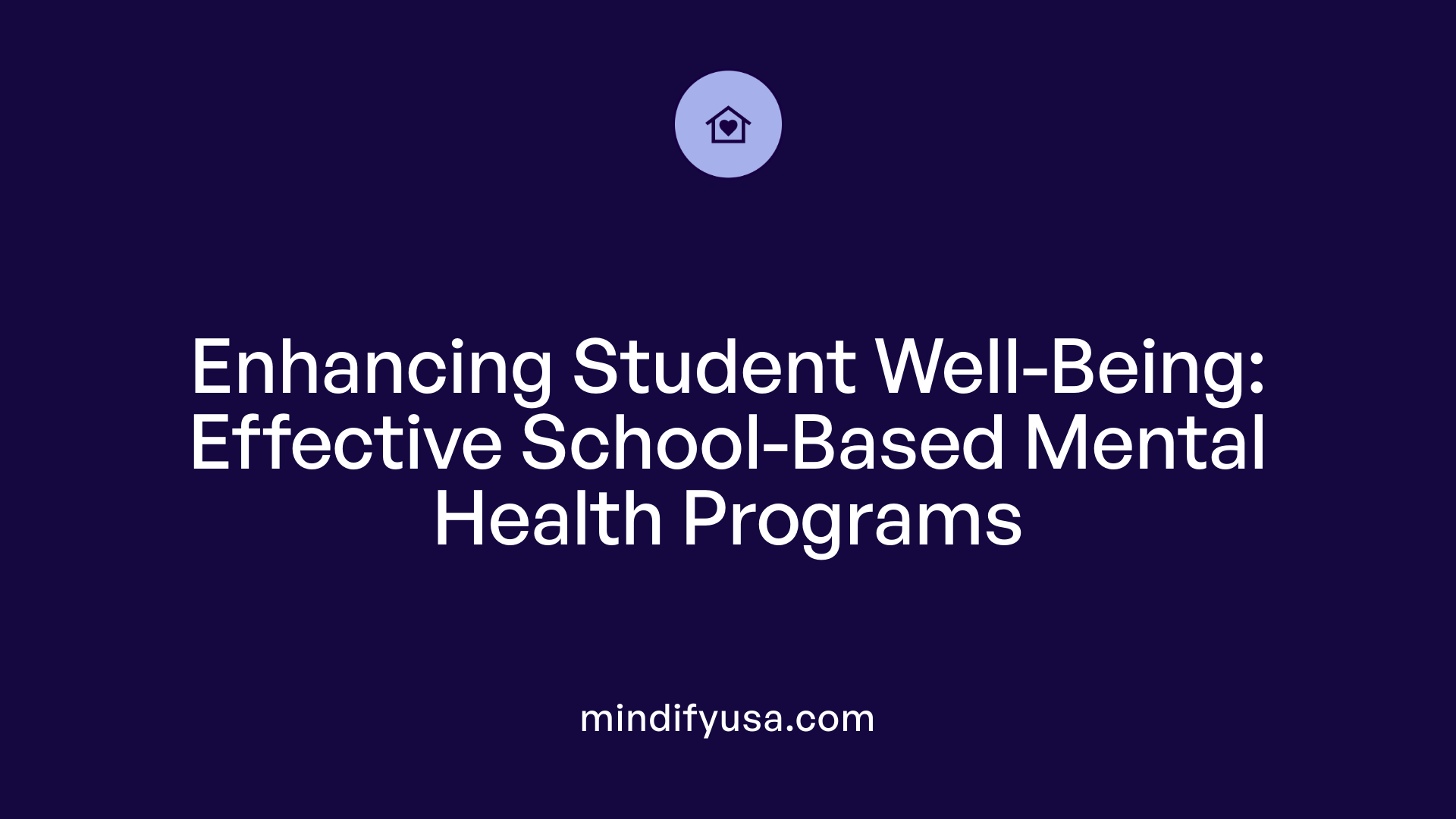
How Do CBT and Group Therapy Work in Schools?
Cognitive-behavioral therapy (CBT) is widely used in school-based mental health programs to help students manage anxiety, depression, and social challenges. These programs often include group therapy sessions, providing emotional support and peer learning opportunities. Group settings help students develop social skills, normalize experiences, and increase self-awareness in a safe environment.
What Impact Do These Programs Have on Depression and Anxiety?
School-based CBT programs have demonstrated effectiveness in significantly reducing depression and anxiety symptoms among adolescents. For example, depression prevention programs, typically delivered over 8-12 sessions, have shown measurable symptom reduction. Specific interventions like the Cool Kids Program and Baltimore Child Anxiety Treatment Study in Schools (BCATSS) show promising outcomes, especially in under-resourced communities.
Are There School-Based Suicide Prevention Programs?
Yes, schools implement suicide prevention programs involving classroom-based didactic and experiential activities. These improve short-term knowledge about suicide risks and prevention strategies. While these programs increase awareness, they currently have less impact on changing attitudes or behaviors, underscoring the need for ongoing development.
What Are Barriers in Traditional Settings That School-Based Programs Address?
Traditional mental health settings often face barriers such as stigma, limited access, and resource constraints. Schools provide a more accessible and non-stigmatizing environment where children can receive support seamlessly. School settings allow for the identification of anxiety-provoking situations in real time, facilitating the application of learned coping skills in daily life.
How Are School Personnel Trained to Deliver These Interventions?
Training school personnel, including counselors and educators, to deliver evidence-based interventions like CBT is crucial. Programs like Support for Students Exposed to Trauma (SSET) enable school staff to administer therapy with preliminary success. Ensuring treatment fidelity and equipping staff with adequate professional development helps sustain effective mental health support within schools.
Digital and Community-Based Mental Health Resources for Youth
What Internet-Based Interventions Are Available for Youth Mental Health?
Digital platforms have become promising tools in addressing mental health issues among young people. Internet-based prevention and treatment programs are specifically designed to target anxiety and depression in youth. These platforms offer accessible and flexible support, allowing adolescents to engage in therapy or prevention strategies from home or school. Although research is ongoing, initial findings suggest these digital tools can help bridge gaps in traditional mental health service provision, especially when in-person access is limited.
How Do Creative Arts Programs Support Mental Health?
Community-based creative activities such as music, dance, drama, and visual arts contribute positively to behavioral changes among adolescents. These programs foster self-confidence and self-esteem and increase levels of knowledge and physical activity. Engaging in creative arts provides young people with expressive outlets and supports emotional well-being through enjoyable and social means.
What Role Does Exercise Therapy Play in Youth Mental Health?
Exercise interventions have shown effectiveness in improving self-esteem and reducing depression symptoms in young people. Regular physical activity supports both physical and psychological health by encouraging healthy behaviors, which are foundational to overall mental wellness.
How Do These Interventions Promote Self-Esteem and Behavioral Improvements?
Combining digital tools, creative arts, and exercise therapies helps promote self-esteem and behavioral improvements in youth by providing multiple avenues for expression, social connection, and coping skills development. These interventions can empower adolescents to manage stress, build resilience, and enhance their emotional regulation, contributing to improved mental health outcomes.
Statistical Overview of Mental Health Needs in Children and Teens
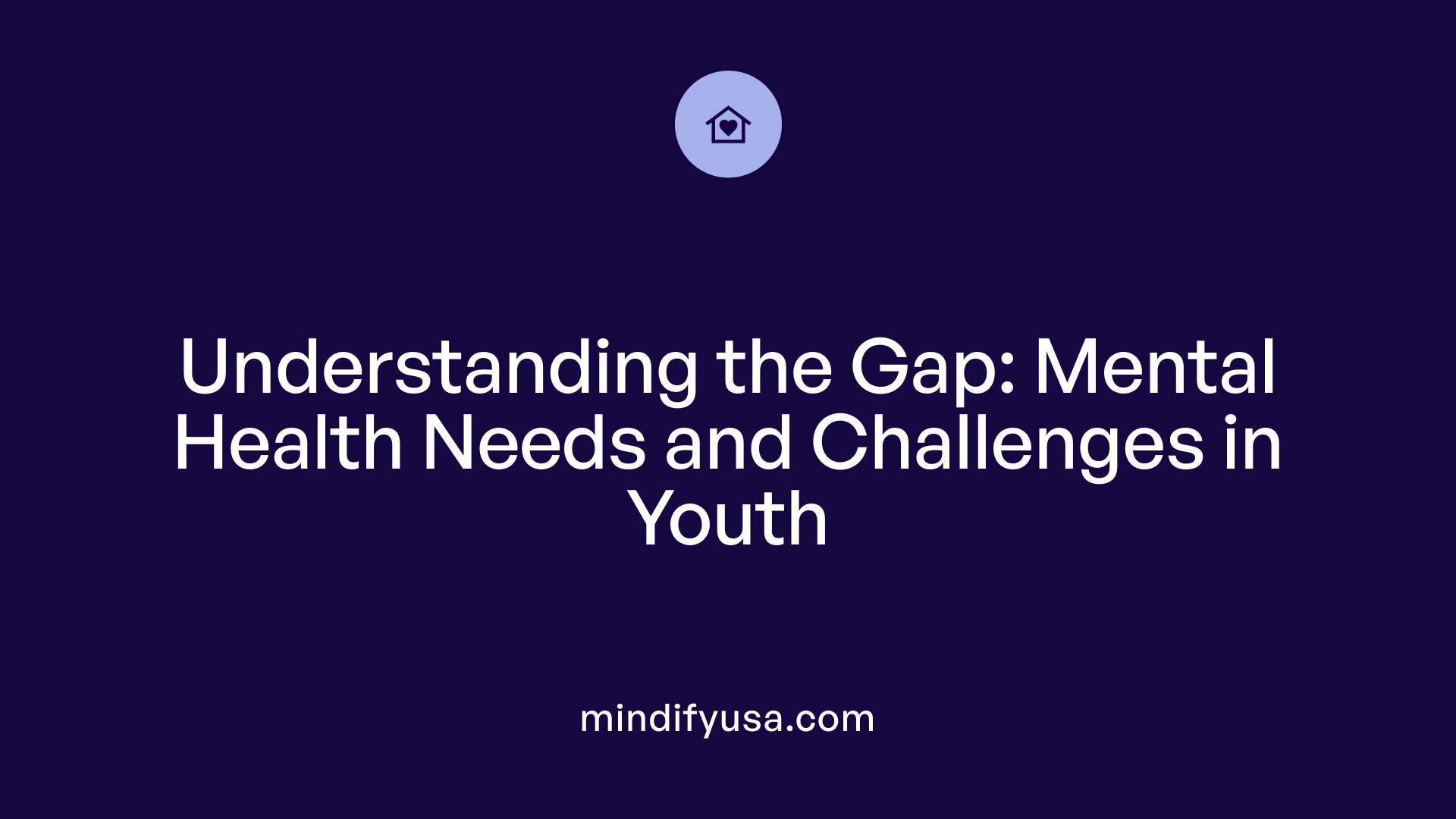
How common are mental health disorders like anxiety, depression, and ADHD among young people?
Anxiety, depression, and ADHD are among the most common mental health disorders in children and teens. Statistics show that about 11% of youth experience anxiety disorders, 11% have ADHD, and 4% suffer from depression. Across their lifetime, nearly half (49.5%) of adolescents will experience a mental health disorder, with anxiety affecting 32% and depression 13%.
How have diagnosis rates for mental health conditions in children changed recently?
Between 2016 and 2020, diagnoses of anxiety disorders in children increased by 29%, while depression diagnoses rose by 27%. These rising rates highlight growing recognition and possible increases in mental health challenges among youth.
What are the suicide statistics related to young people?
Tragically, suicide remains a leading cause of death among young people. In 2020, suicide was the second leading cause of death for children aged 10 to 14 as well as young adults aged 25 to 34. This underscores the critical need for early intervention and mental health support.
How did the COVID-19 pandemic affect youth mental health?
The COVID-19 pandemic exacerbated existing mental health challenges for children and teens. Increased isolation, disruptions in routines, and added stressors contributed to heightened anxiety, depression, and other emotional problems during this period.
This snapshot of mental health statistics reveals the significant and growing need for accessible, evidence-based mental health services for children and adolescents to promote early diagnosis and effective intervention.
Navigating Access and Policy Support for Youth Mental Health Services
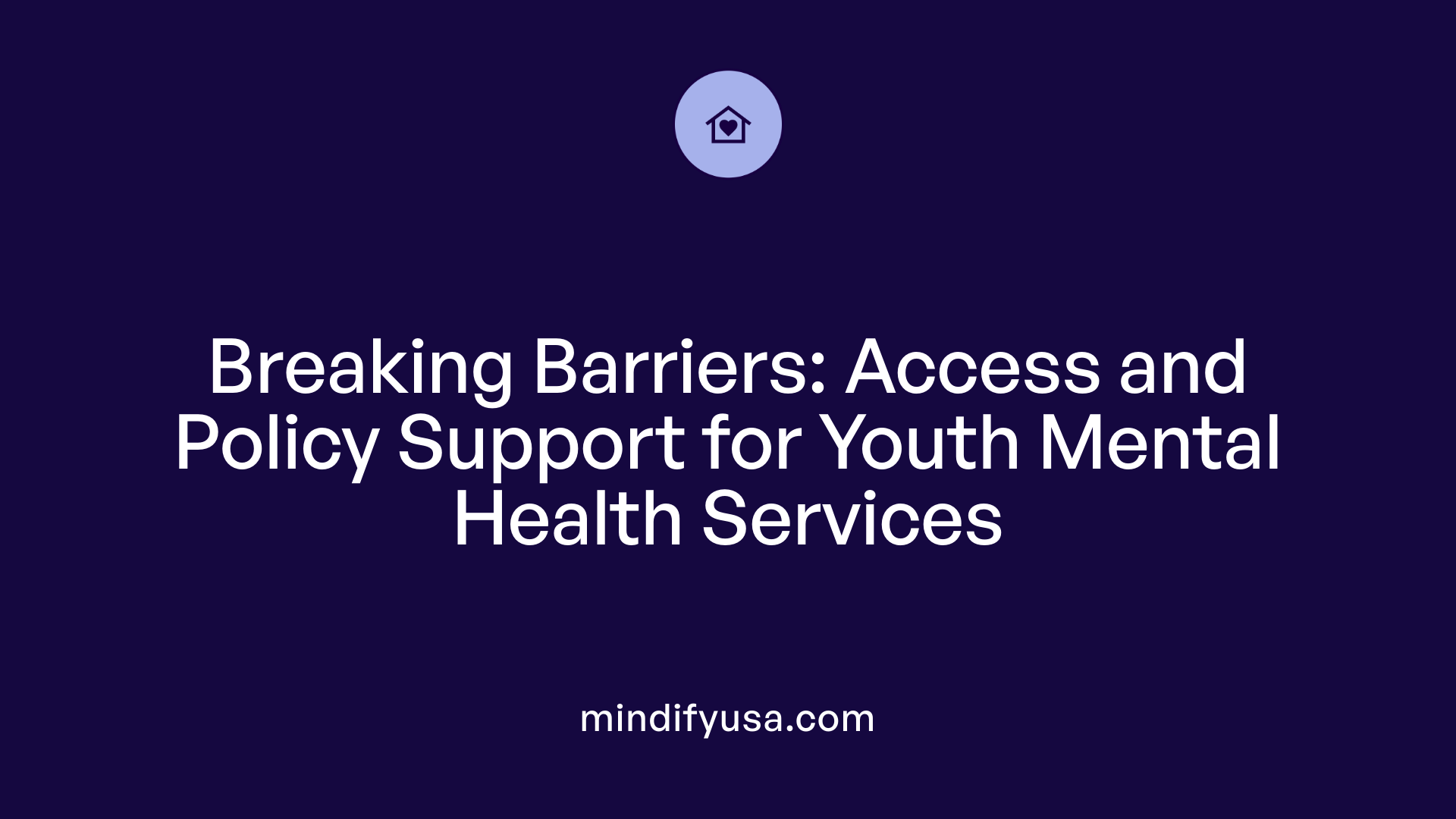
How Can Families Access Mental Health Services for Youth?
Families seeking mental health support for children and teens can obtain referrals through multiple trusted sources. These include schools, primary care providers, health insurance plans, and community contacts. Various service locator tools also help families identify appropriate outpatient and therapy programs offering individual and group support tailored to young people’s needs.
What School-Based Health Programs Support Mental Health?
Schools are critical venues for delivering mental health services, especially through embedded health programs. These programs offer primary care and behavioral health services onsite, reducing barriers such as stigma and access issues. Evidence-based school interventions include group therapy, cognitive-behavioral therapy (CBT), and trauma-focused treatments designed to foster communication, coping skills, and social success among students.
What Funding Initiatives Enhance Youth Mental Health Services?
Federal investments significantly bolster community and school-based mental health programs. The Bipartisan Safer Communities Act allocates funds for crisis intervention and school services. SAMHSA’s initiatives, including those under the American Rescue Plan Act, expand community mental health networks for youth. These funding efforts aim to address rising mental health challenges and improve equity in service availability.
How Does Teleconsultation Support Mental Health Care?
Teleconsultation programs, such as HRSA’s Pediatric Mental Health Care Access, enable primary care providers to connect with mental health specialists remotely. This approach enhances early diagnosis and treatment, particularly in underserved areas, increasing access to expert guidance without the need for direct specialist visits.
What Role Do Medicaid and CHIP Play in Behavioral Health Services?
CMS guidance ensures that Medicaid and the Children’s Health Insurance Program (CHIP) cover comprehensive behavioral health services, including onsite school health care. This support helps integrate mental health into routine care settings, facilitating timely access to needed services and promoting holistic health management for children and adolescents.
Integrated Frameworks for Holistic Student Support
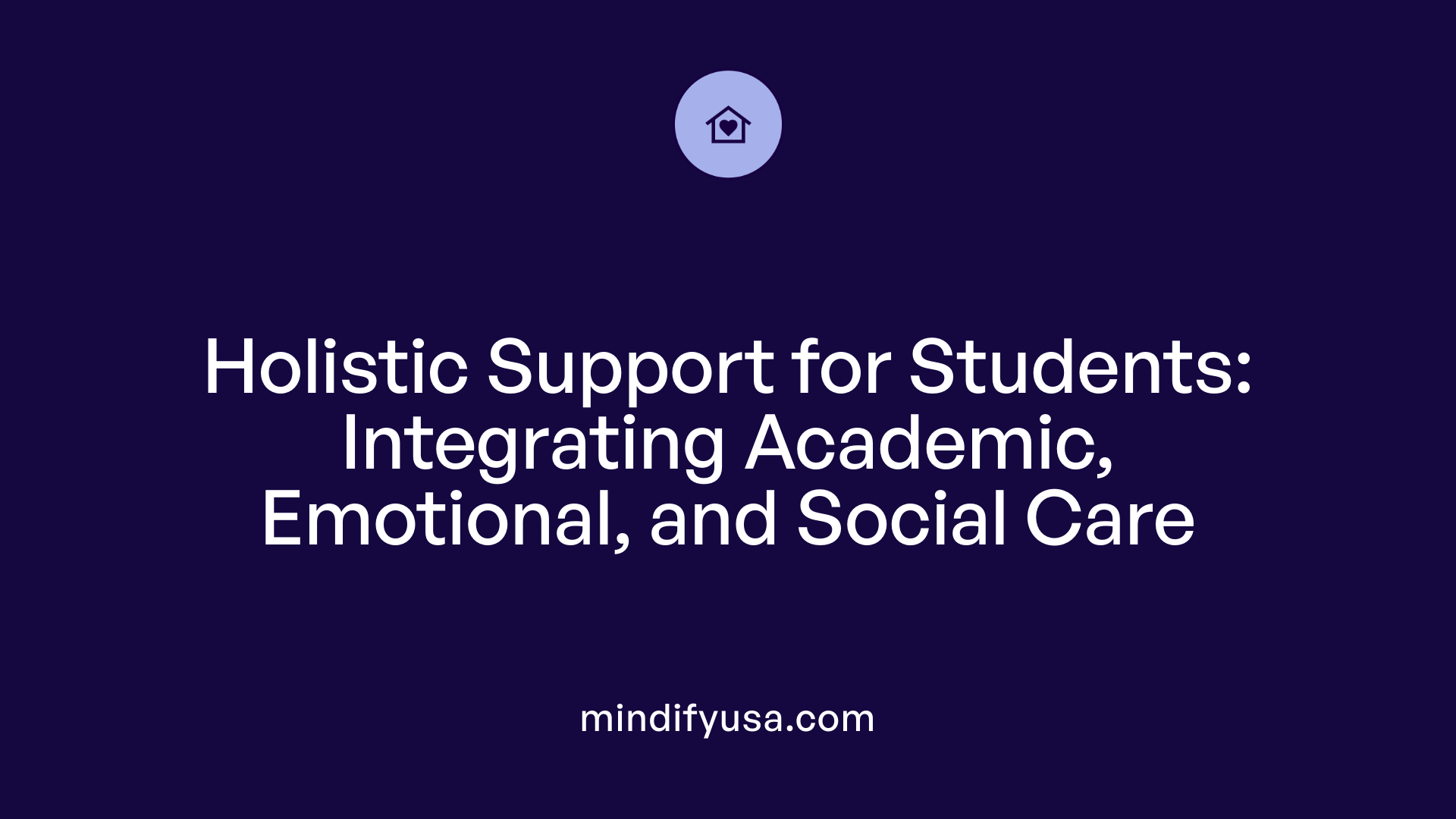
How can educational, social, emotional, and behavioral support be integrated for students?
An effective approach to supporting children's mental health involves creating an integrated framework that simultaneously addresses their educational, social, emotional, and behavioral needs. This means schools and communities work together to provide comprehensive mental health services within environments familiar to students, such as school-based health programs.
By embedding prevention, early intervention, and treatment within schools, students can gain easier access to support without the barriers often associated with traditional mental health settings. Such integration allows mental health care to align closely with educational goals and social development needs.
Why is addressing stigma important in student mental health services?
Stigma remains a significant obstacle preventing many children and teens from seeking or receiving mental health help. Perceived stigma can discourage students from sharing concerns or participating in treatment. To combat this, school programs emphasize normalizing mental health discussions, increasing awareness, and fostering environments where seeking help is encouraged and supported. Overcoming stigma is crucial to improving utilization and effectiveness of mental health resources.
What is meant by a continuum of evidence-based prevention practices?
The continuum of prevention refers to implementing a range of evidence-based policies and programs that address mental health needs before, during, and after symptoms develop. This includes universal preventive education, targeted group and individual support like cognitive-behavioral therapy (CBT) interventions for anxiety and depression, crisis intervention, and ongoing care. The goal is to provide layered support tailored to the severity and nature of the student’s needs.
How is data-driven decision-making used to improve mental health outcomes?
Using data effectively allows schools and policymakers to identify emerging trends in student mental health, allocate resources where they are most needed, and measure the effectiveness of interventions. Data collection guides continuous improvement, ensuring equitable access and culturally responsive care.
Why is professional development critical for mental health support in schools?
Ensuring school personnel, including counselors and teachers, are trained in evidence-based mental health interventions is essential. Professional development builds workforce capacity, enabling staff to recognize mental health concerns, deliver appropriate interventions, and maintain treatment fidelity. Ongoing training fosters a supportive school culture that proactively addresses student mental health.
| Aspect | Focus Area | Impact on Student Mental Health |
|---|---|---|
| Integration | Educational, social, emotional, behavioral | Comprehensive, accessible support |
| Stigma | Awareness and normalization | Increased help-seeking and participation |
| Continuum of Prevention | Universal to targeted approaches | Early identification and treatment |
| Data Usage | Trends, outcomes measurement | Informed resource allocation and program refinement |
| Professional Development | Training in evidence-based practices | Workforce readiness and intervention effectiveness |
Impact of Physical Health on Mental Well-being in Youth
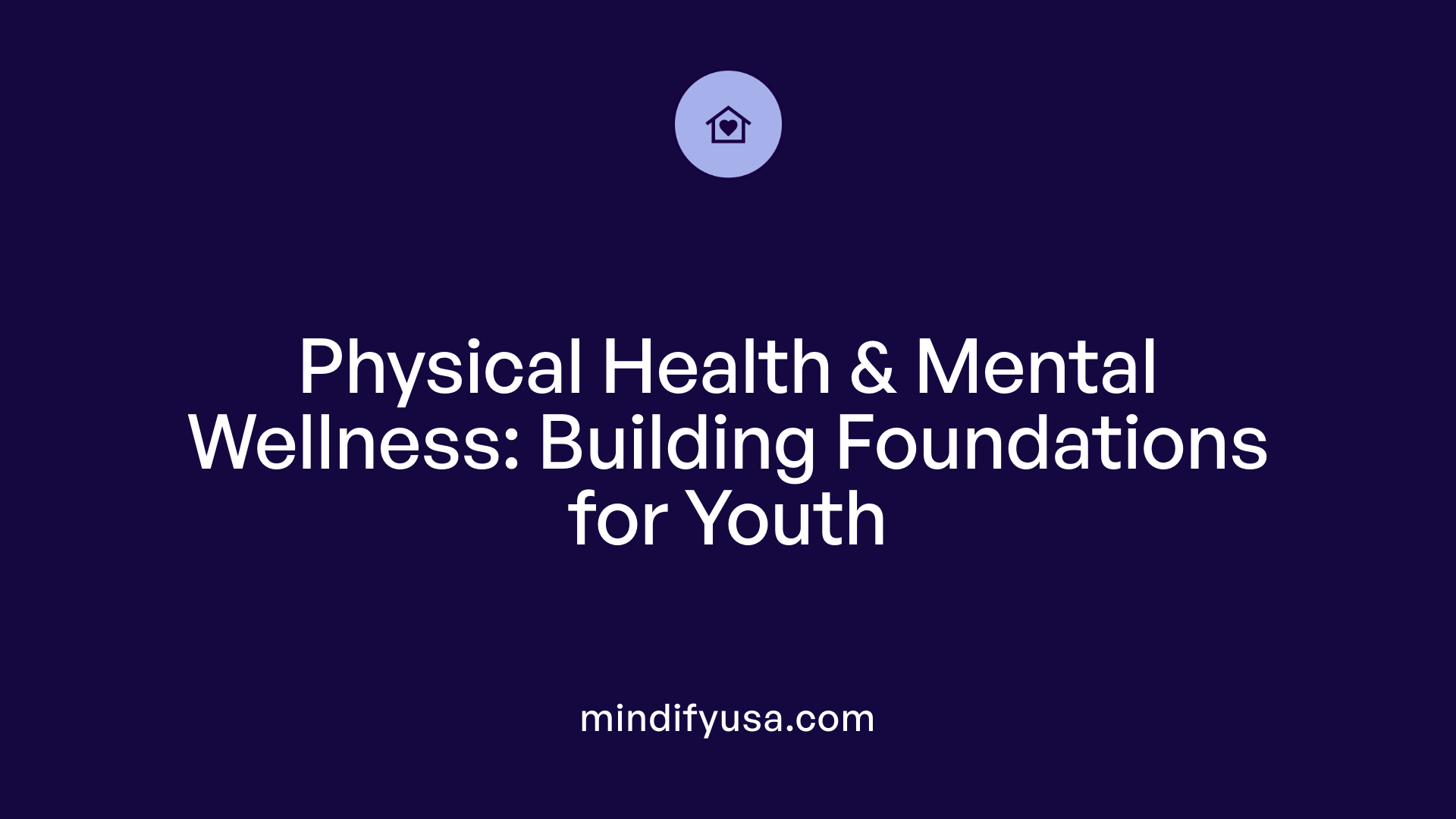
How do exercise and diet influence mental health in children and teens?
Regular physical activity plays a crucial role in improving self-esteem and reducing depressive symptoms among youth. Exercise interventions have demonstrated notable benefits, such as elevating mood and promoting emotional balance. Similarly, a healthy diet supports brain functioning and overall energy levels, which contributes to maintaining positive mental health.
Why is sleep important for youth mental well-being?
Adequate and consistent sleep is vital for emotional regulation and cognitive processes in children and adolescents. Insufficient sleep can worsen symptoms such as anxiety, depression, and irritability, making it harder for young people to cope with everyday stresses. Establishing good sleep habits is an essential component of supporting mental health.
How do strong relationships contribute to mental health support?
Building and maintaining supportive relationships with family, friends, and school personnel provides a protective effect against mental health challenges. Strong social connections foster a sense of belonging and offer emotional support, which can aid young people in managing mental health difficulties effectively.
In what ways does physical well-being support mental health?
Physical well-being, encompassing exercise, diet, sleep, and social connections, creates a foundation that reduces mental health risks and enhances resilience. These healthy habits improve brain development and emotional regulation, especially during adolescence when the brain undergoes significant changes. Integrating physical health practices into daily routines is a vital strategy for promoting better mental health outcomes in youth.
Future Directions and Innovations in Therapy for Youth with Learning Hurdles
What Are Emerging Treatments in Youth Mental Health Therapy?
Emerging treatments focus on integrating evidence-based psychological therapies with innovative approaches tailored for children and adolescents. For example, digital platforms delivering cognitive-behavioral therapy (CBT) and dialectical behavior therapy (DBT) are gaining traction, offering accessible, flexible options for youth with mental health challenges. Creative community-based interventions, including music, dance, and visual arts, also complement traditional therapies by enhancing self-esteem and behavioral changes.
How Is Maintenance of Treatment Fidelity Addressed?
Maintaining treatment fidelity involves rigorous training of school personnel and mental health professionals to deliver standardized evidence-based interventions. Programs like Skills for Academic and Social Success (SASS) and Support for Students Exposed to Trauma (SSET) emphasize fidelity through manualized content and ongoing supervision. Ensuring treatment consistency across diverse educational settings is a priority to maximize outcomes.
What Efforts Are Being Made to Expand Workforce Capacity?
Workforce expansion targets training more school counselors, therapists, and primary care providers in youth mental health care. Initiatives like HRSA’s Pediatric Mental Health Care Access program enhance provider consultation via telehealth, enabling broader reach into underserved areas. Professional development focuses on equipping staff with skills to identify, refer, and treat mental health concerns effectively within school and community contexts.
What Specialized Interventions Address Treatment-Resistant Conditions?
Specialized interventions for treatment-resistant conditions include multimodal approaches combining pharmacological and psychological therapies tailored to individual needs. For example, combining antidepressants with CBT can prevent relapse in depression. Additionally, culturally adapted programs like the Baltimore Child Anxiety Treatment Study (BCATSS) cater to inner-city youth facing unique socio-environmental stressors.
How Are Data and Technology Used to Innovate Care?
Data-driven approaches support decision-making by tracking treatment effectiveness and identifying disparities among youth populations. Technology facilitates scalable intervention delivery through the internet and mobile apps, allowing real-time monitoring and personalized feedback. Integration of school-based data systems enables timely identification of at-risk students, improving early intervention efforts.
These innovations collectively aim to enhance access, quality, and outcomes of mental health services for children and adolescents overcoming learning and emotional hurdles.
Towards Effective Therapy Plans for Youth with Learning Hurdles
Addressing mental health in youth with learning hurdles requires comprehensive, evidence-based therapy plans that engage families, schools, and healthcare systems. Early intervention, combined therapeutic approaches tailored to developmental stages and individual needs, and accessible school and community resources can significantly improve outcomes. Continued policy support, workforce development, and innovative intervention delivery will be essential to meet the rising and diverse mental health needs of children and adolescents, ensuring they thrive academically, socially, and emotionally.
References
- Treating Children's Mental Health with Therapy
- Mental Health Therapy for Teens
- Child and Teen Mental Health: A Guide for Adults
- Interventions for Adolescent Mental Health: An Overview ...
- Behavioral Health Resources for Youth
- School-Based Anxiety Treatments for Children and ...
- Supporting Child and Student Social, Emotional, ...
- Ten ways to improve the treatment of depression and ...
- Mental Health Conditions: Depression and Anxiety












